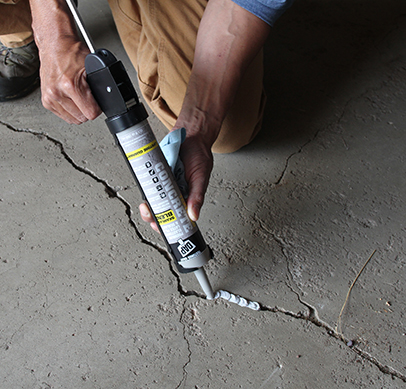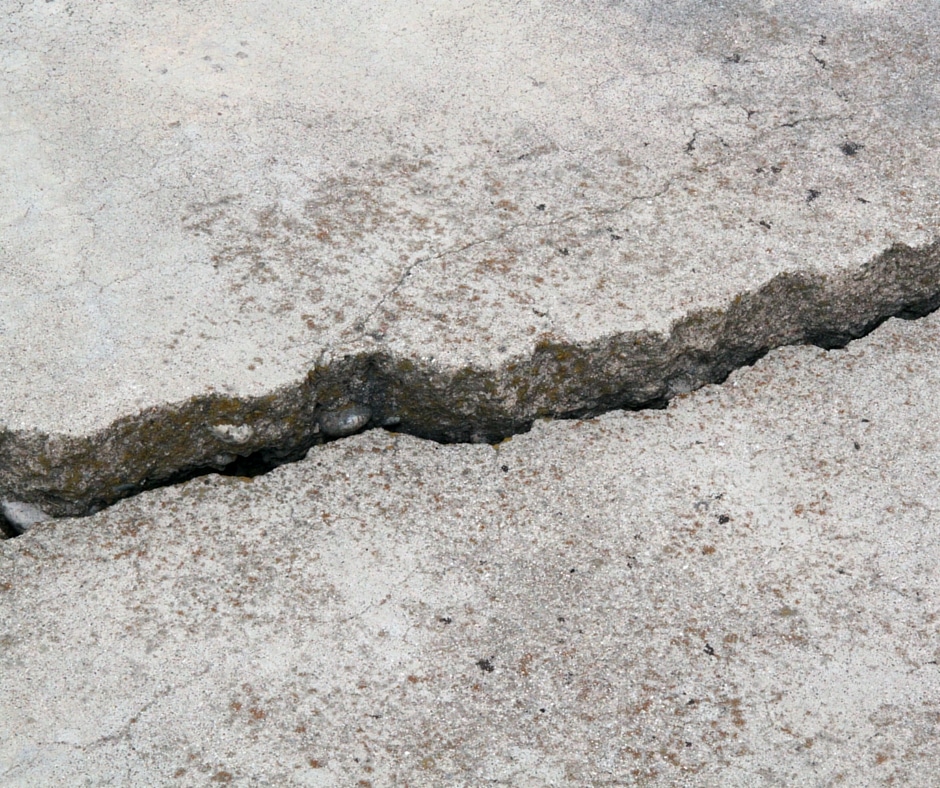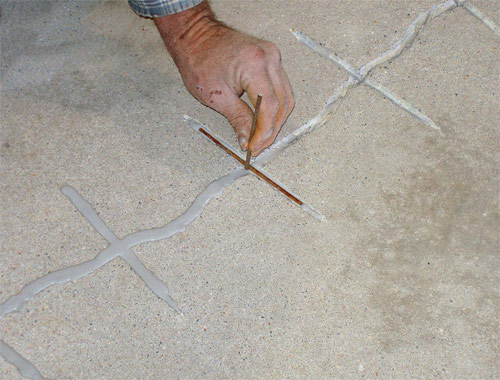Fixing concrete floor cracks is an important task that many homeowners often neglect. However, leaving these cracks unattended can lead to more significant issues that may be costly to fix. In this comprehensive guide, we will provide you with tips and tricks on how to fix small and large cracks in concrete floors, so you can maintain the beauty and durability of your concrete flooring.
Identifying the Type of Crack
Before fixing any concrete floor crack, it’s important to determine the type of crack you’re dealing with. For example, a small hairline crack may only require a simple sealer, while a larger crack may need more specialized materials and equipment.
Fixing Small Cracks
For small cracks, it’s recommended to use a concrete sealer. Start by cleaning the area around the crack and removing any debris or loose concrete. Apply a thin layer of the sealer over the crack and let it dry completely. This will help to prevent water from seeping into the cracks, which can cause further damage.
Fixing Large Cracks
For larger cracks, using an epoxy or patching compound is necessary. Start by chipping out the edges of the crack so it’s wider at the bottom than at the top, creating a wedge shape. This will help to hold the patching material in place. Next, fill the crack with your chosen material, making sure it’s level with the surrounding floor. Use a trowel to smooth out the surface and remove any excess material.
Calling in a Professional
If you’re dealing with significant damage, such as large cracks or shifting, it’s best to call in a professional. They have specialized equipment to fill in the cracks and ensure the floor is level again. Hiring a professional may seem costly, but it’s a worthwhile investment, in the long run, to ensure your concrete floor remains durable and safe.
Preventing Future Cracks
To prevent future cracks, regular maintenance is essential. Clean your concrete floor regularly with a mild detergent and mop up any spills immediately. Avoid using harsh chemicals or abrasives that can damage the surface. If you notice any significant damage or shifting, have it looked at right away, so it doesn’t get worse?
Fixing concrete floor cracks may seem daunting, but with the right materials and know-how, it can be done with relative ease. By following the tips and tricks outlined in this guide, you can maintain the beauty and durability of your concrete flooring for years to come. Remember, identifying the type of crack is crucial, and calling in a professional for significant damage is always a good idea. Regular maintenance is key to preventing future cracks and ensuring your concrete floor remains in top condition.
Fixing Concrete Floor Cracks

Foundation Crack Repair in 8 Steps – This Old House
/cdn.vox-cdn.com/uploads/chorus_image/image/65891854/00_concrete_xl.0.jpg)
Foundation Floor Crack Repair CrackX

Basement u0026 Foundation Floor Cracks Repair in Atlanta Georgia

How to Repair Small Cracks in Concrete Floors
:max_bytes(150000):strip_icc()/GettyImages-147217539-584b09cb3df78c491e1ab228.jpg)
How to Fix Cracks, Crumbles, and Breaks in Concrete DAP Global

How to Repair Garage Floor Cracks and Pitting All Garage Floors

When to call a professional to repair cracked concrete

DIY Concrete Crack Repair Family Handyman

How to Fix Cracks in Concrete

Decorative Concrete Cracks, Now What? – Concrete Decor

Related Posts:
- Staining Concrete Floors How To
- Refinishing Old Concrete Floors
- Concrete Floor Faux Finish
- Resurfacing A Concrete Floor
- Concrete Floor Sealer And Paint
- Faux Concrete Floor Tiles
- Insulated Concrete Floor Slab Detail
- Concrete Floor Resurfacing Cost
- Polished Concrete Floors How To
- Concrete Floor Vapor Barrier Installation
Fixing cracks in your home’s concrete foundation is a necessary task to avoid serious structural problems. Luckily, there are affordable solutions available for both DIY enthusiasts and those who prefer to hire professionals. Here are some tips to help you repair the cracks in your home’s foundation.
Before deciding whether to attempt the repair yourself or hire a professional, it’s important to assess the situation. If you’re confident in your skills and knowledge, there are numerous online resources that offer step-by-step guides to help you complete the project. DAP Global and This Old House are two great websites that offer a wealth of information and helpful tips. However, if you’re uncertain about the extent of the damage or the proper repair method, it’s best to consult with a professional.
When it comes to repairing cracks, it’s important to first identify the type of crack you’re dealing with. Hairline cracks are common in basements and foundations and can often be filled with a simple patch or filler. For larger cracks, epoxy resin is typically required. Stress cracks, caused by the shifting of the ground or settling of the house, also require epoxy resin to fill the crack properly.
Be cautious when choosing products to repair concrete cracks, as not all products on the market are effective. Avoid products marketed as “concrete filler” or “concrete sealer,” as they may not properly fix the problem and can even make it worse. Instead, opt for a product that will fill the crack without breaking the bank.
Water seepage is a common cause of concrete cracks, and repairing the foundation may be necessary before addressing the crack itself. Identifying the source of the leak is crucial before attempting any repairs. If you’re unsure, consult with a professional. Once the leak has been addressed, repairing the crack with a patch or filler is usually sufficient.
By following these tips and using the appropriate materials, you can effectively repair concrete cracks in your home’s foundation without breaking the bank.
What type of material is best for filling concrete floor cracks?
An epoxy-based filler is the best material for filling concrete floor cracks. This type of filler is strong and flexible, so it can withstand the constant expansion and contraction of the concrete without cracking or crumbling. It also seals the crack and prevents water from seeping in, helping to protect the floor from further damage.